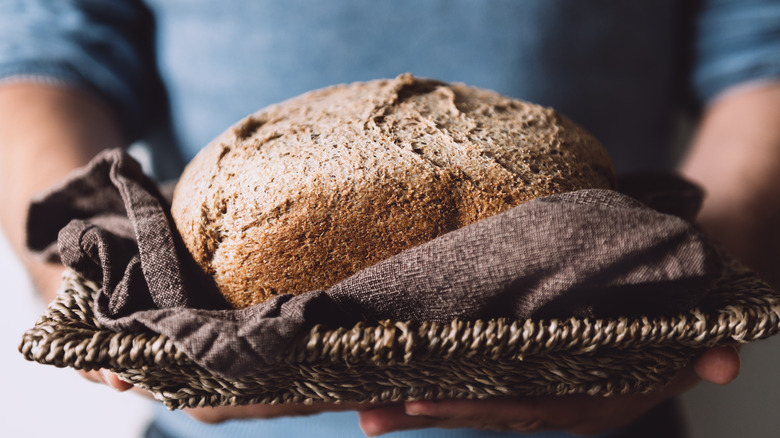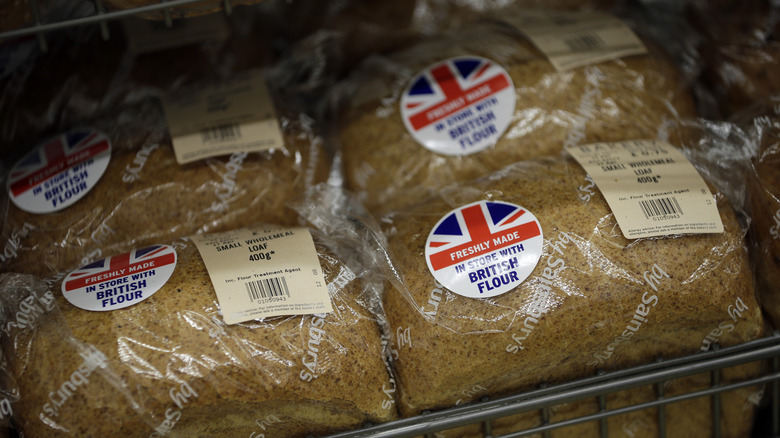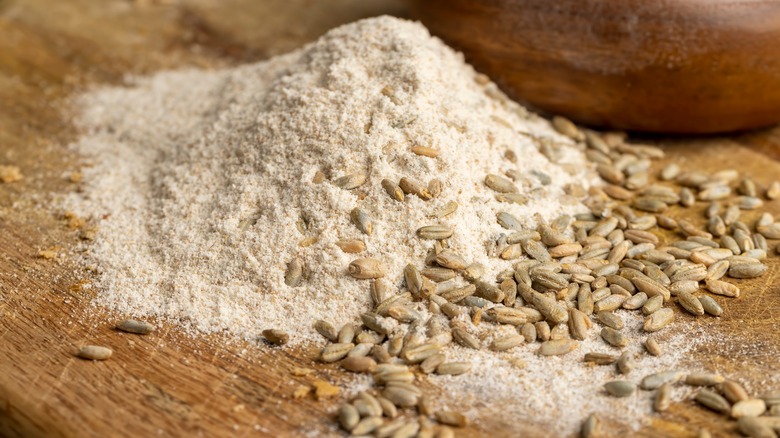Why England Banned White Bread During World War II
Bread: the world's most taken-for-granted food. It comes in loaf, roll, cylinder, or flat forms. It's puffy or kinda hard, chewy or crusty, and if someone wants to charge a lot of money for it they call it "artisanal" or something. Bread is so commonplace that it's considered the most primitive of foods (e.g., making due on bread and water), and it's strange to think that bread has been one of the most critical pieces of human survival since the dawn of agriculture and before. Grants Bakery talks about the domestication of wheat happening between 14,600 and 11,600 years ago in the Middle East, and spreading from there.
But could bread affect a country's war effort? The U.K. government certainly thought so during World War II, so much so that it curtailed citizens' choices of that most precious of daily breads: white bread. Starting April 6, 1942, as The Wartime Kitchen tells us, the U.K.'s Ministry of Food decreed that none shall eat bread but the standardized "National Loaf" that all bakeries everywhere had to make. The National Loaf was a coarse, starchy, dense hunk of brown bread made from "wheatmeal flour," i.e., flour made from every part of wheat except the roughest bran. As Check Your Food says, this was apparently done for nutritional purposes, as the war was sucking up resources to the frontlines. The National Loaf was an attempt to make sure folks got the nutrition that they needed and to conserve resources by not wasting flour.
Nutritious, dry, and generally unappetizing
While it be easy to say that the U.K. government wanted to keep citizens healthy so they could chuck more bodies into during World War II war machine, health was the stated goal. The Wartime Kitchen says that the National Loaf had extra vitamins and calcium in it, which was great for the poorest in society. Made from wholemeal flour — another term for whole wheat or whole grain — the National Loaf was far more healthy than white bread. Real Simple explains that white bread has the bran and germ removed (the parts with vitamins, proteins, oils, etc.), which leaves only the endosperm (the startchy bit). This means that white bread wastes flour because the bran and germ are removed, which makes it harder to feed everyone.
Per Historic UK, bakeries only had one day a week to bake their loaves, and couldn't sell any till the following day. This would have proved troublesome for Brits, because as The Wartime Kitchen says, the National Loaf dried out rather quickly. The bread was already dry to begin with, had a grainy, "sawdust"-like texture, and a grayish color like its flour. In other words, folks found it generally unappetizing. It also contained a lot of salt so it would keep better. As for keeping the bread moist, folks just resorted to dunking it in water. And yes, this includes soldiers, per Pacific Atrocities, who also had the National Loaf shipped to them.
Support your country: eat less bread
Strictly speaking, white flour wasn't banned in the U.K. during World War II — it was only banned for making bread. Manufacturers who made cakes and cookies could still use white flour, as Pacific Atrocities explains. Judging by wartime posters from the era, there was a whole national effort to be mindful of food, which included switching to the National Loaf. One poster, complete with a Union Jack flag topping a loaf of bread, reads, "While we waste bread ... We take a slice of Britain's loaf. Don't waste bread." Another poster featuring a whole, plain loaf bluntly says, "Eat less bread."
And yet, the whole National Loaf campaign wasn't framed as rationing food, a move that British Prime Minister Winston Churchill thought would be demoralizing to people since it was such simple fare, per Cooks Info. The campaign was framed more as a "do your part for your country" thing, no matter that people didn't have any choice in the matter. This wasn't the first time Britain had to deal with such a problem, either. World War I saw a similar standardization of flour, per the U.K. National Archives, as well as a delay between baking and selling bread on the pretext that it made the bread healthier.
Cooks Info says that the National Loaf was only discontinued in 1956, a full 14 years after it launched. But for those wanting a taste, you can check out the recipe at The Wartime Kitchen.


